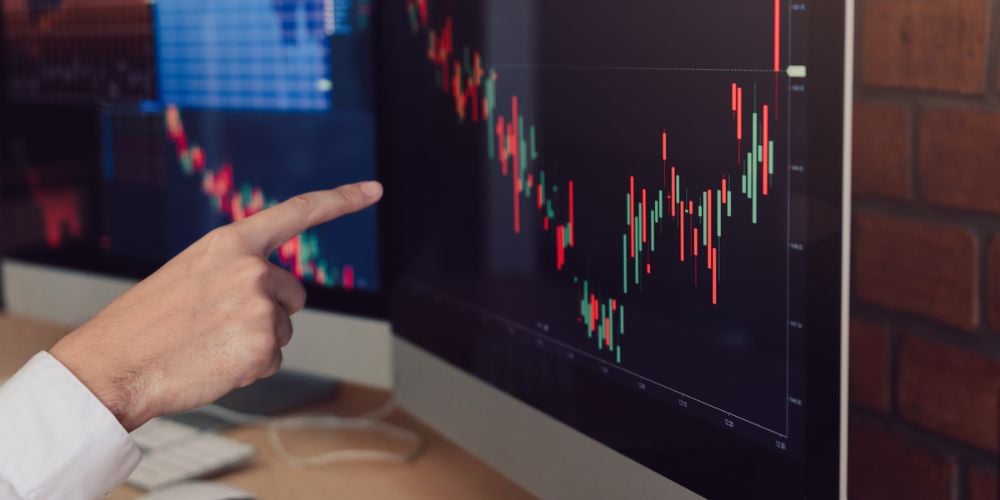Algorithmic trading, a method where computers make trades based on sets of instructions or algorithms, has transformed the landscape of financial markets. This approach combines mathematics, computer science, and financial theory to execute trades at high speeds and volumes.
The potential to make money through algorithmic trading attracts both seasoned professionals and beginners alike, raising the question: can you make money with algorithmic trading?
What is Algorithmic Trading?
Algorithmic trading is the use of computer programs to trade financial instruments. These programs follow specific instructions based on timing, price, and volume to place orders automatically.
Unlike manual trading, algorithmic trading aims to maximize efficiency and profitability, reducing the impact of human emotions on trading decisions.
The field encompasses several strategies, including mean reversion, momentum, and arbitrage, each with its unique approach to the markets.
Mean reversion strategies assume that prices will revert to their average over time, momentum strategies bet on the continuation of trends, and arbitrage strategies aim to profit from price discrepancies in different markets.

Can You Make Money With Algorithmic Trading?
The main appeal of algorithmic trading lies in its efficiency and reduction of human error. By automating the trading process, algorithms can execute orders faster than a human trader could, taking advantage of market opportunities the moment they arise.
Moreover, algorithms follow a predetermined set of rules, thus eliminating emotional biases that often lead to poor trading decisions.
Further, algorithmic trading allows for backtesting, the process of testing a strategy using historical data to see how it would have performed.
This feature is invaluable, providing insights into the potential success of a strategy before risking real money.
Key Components of Successful Algorithmic Trading
Understanding Financial Markets
A deep understanding of financial markets is fundamental to crafting successful algorithms.
Traders must be familiar with market structures, operations, and the impact of various economic indicators to develop strategies that can withstand market volatility.
Robust Infrastructure
Successful algorithmic trading relies on technological infrastructure. This includes both hardware and software capable of executing trades quickly and reliably.
Additionally, a stable and fast internet connection is critical to ensure timely order execution.
Effective Trading Strategies
Selecting and refining effective trading strategies are central to algorithmic trading. Traders often use a mix of strategies, adjusting them based on market conditions to maximize profitability.
Risk Management
Effective risk management techniques are essential to protect against significant losses.
This involves setting up stop-loss orders and other mechanisms to limit financial exposure.
How to Start with Algorithmic Trading?
For those interested in algorithmic trading, learning to program or hiring a programmer is the first step. Python and R are popular languages due to their simplicity and powerful libraries.
Using pre-built trading platforms can also provide a foundation, though bespoke solutions offer more flexibility.
Continuous education and remaining current with market trends are critical, as the financial markets evolve constantly.
Challenges and Risks in Algorithmic Trading
While algorithmic trading offers many advantages, it’s not without its challenges. Technical failures, such as software bugs or hardware issues, can lead to significant losses.
Market risks also pose a threat, as algorithms might not perform as expected under unusual market conditions.
Additionally, competition is fierce, particularly from institutional traders with more resources.
Success Stories and Failures
The financial world is replete with tales of both success and failure in algorithmic trading.
Some traders have made fortunes by developing innovative algorithms, while others have suffered losses due to overreliance on automated systems.
Studying these cases offers valuable lessons, emphasizing the importance of rigorous testing and risk management.
Cost Considerations
The initial investment in algorithmic trading can be significant, with costs for software, data access, and infrastructure.
Moreover, ongoing expenses, such as transaction fees, can add up. Prospective traders should carefully consider these costs against the potential returns.
Regulatory and Ethical Aspects
Algorithmic traders must navigate a complex landscape of regulations, which can vary by jurisdiction.
Additionally, ethical considerations arise, particularly regarding the impact of high-frequency trading on market integrity. Compliance with legal standards and ethical trading practices are paramount.

Pro Tips
Starting small allows traders to test their strategies without significant risk. Networking with other traders can provide insights and foster growth.
Finally, regular review and refinement of algorithms based on performance are crucial for long-term success.
Algorithmic trading represents a fascinating intersection of technology and finance. With the right approach, it offers the potential for significant profits.
However, success requires dedication, continuous learning, and an understanding of both the opportunities and the risks involved.
Conclusion
Making money with algorithmic trading is possible, but it requires a combination of market knowledge, technological infrastructure, and effective risk management.
The approach offers many advantages, including efficiency and the ability to backtest strategies.
However, it also comes with inherent risks and challenges. Aspiring traders should start small, remain diligent, and continuously adapt their strategies to market conditions.


 Tags:
Tags:










